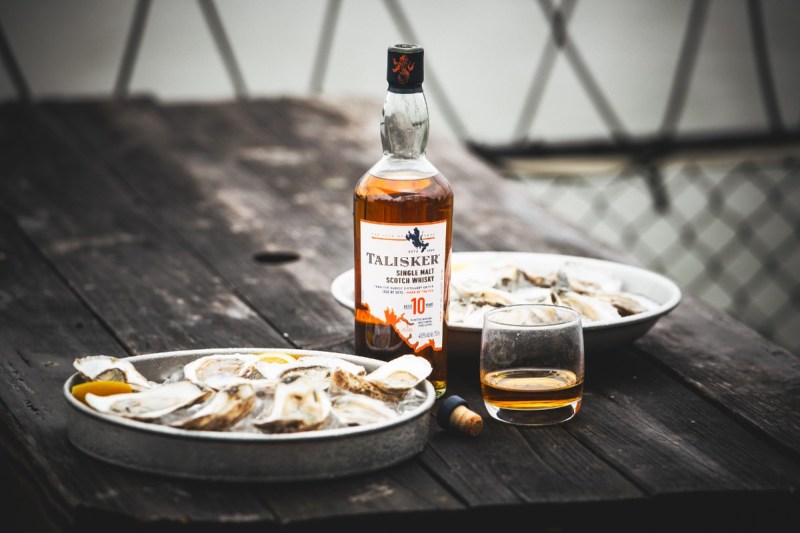Off the northwest edge of Scotland lies the Inner Hebrides, an island archipelago separating Scotland from the Atlantic Ocean. In 1830, Talisker Scotch founders, the MacAskill brothers, sailed north from the tiny Isle of Eigg in the Hebrides for its largest land mass, the Isle of Skye. Their eye was on an Atlantic arm, Loch Harport, on which shores they would found the Talisker distillery. Almost 200 years later, the single malt Scotch whisky maker maintains this elemental wildness not only in its spirits, but also as a protector of the salted waters on which it sits.
Talisker’s history entwines the infamous Oyster Shed, a fresh seafood eatery and market that shares the rugged coastline with the distillery, pairing smoky spirits with the earthy bivalves that populate its shores. In honor of the waters that uplift Talisker, the company launched its “One For The Sea” project this July. The global initiative “encourages consumers to reconnect with, preserve and protect our oceans through donations and sustainable practices.” This translates to a campaign for shellfish across the pond with New York City nonprofit Billion Oyster Project (BOP).

“We are so appreciative of the continued support from Talisker over the past two years and look forward to another impactful year of partnership with them,” Pete Malinowski, BOP’s executive director, said in a statement. “Their ongoing commitment to our Shell Collection Program has helped us restore more oyster reefs and work toward a cleaner New York Harbor for all.”
N.Y. Harbor opens at the mouth of the Hudson River and empties into New York Bay near the East River tidal estuary before flowing into the Atlantic Ocean. One of the world’s largest and best natural harbors in the world, it took Western settlers less than 100 years to wipe out its oyster population. To bring back a healthy habitat, the BOP is committed to restoring 1 billion oysters to N.Y. Harbor by 2035.
Talisker is the lead sponsor of the Shell Collection Program, a cornerstone of the nonprofit’s work that aims to divert shells used by New York City restaurants from landfills to be reused for the restoration of oyster reefs. In 2022 alone, BOP cited a collection of more than 300,000 pounds of oyster shells from over 50 New York City restaurants, productively upcycling former detritus as critical reef environs. As sea levels rise during climate change, intentionally built ecosystems are integral to sustaining ecosystems. These massive marine communities can create homes for underwater life, clean city waterways, and prevent coastal erosion.
Talisker is also teaming up with Emmy-award-winning actor and environmental advocate Matthew Rhys to amplify BOP initiatives and reinforce the brand’s ongoing commitment to protecting local and global waters.
“We all benefit from healthy oceans, and as a Brooklyn resident, I’ve seen firsthand the impact BOP has on cleaning, restoring, and protecting local waterways,” Rhys said in a statement.
New Yorkers are also invited to the party via BOP’s passport program, which encourages diners to enjoy Talisker and oysters at New York City restaurants. Until Labor Day, Talisker will donate an additional $10 to the BOP for each @talisker Instagram shoutout and #oneforthesea and #donation tag in posts or Stories (max $25,000). This will allow the BOP to collect and recycle 5 additional pounds of used oyster shells for every qualifying social post from local New York restaurants back to local waters.
One lucky, over-21 poster will win a plus-one trip to the Hamptons by adding the hashtag #sweepstakes.



